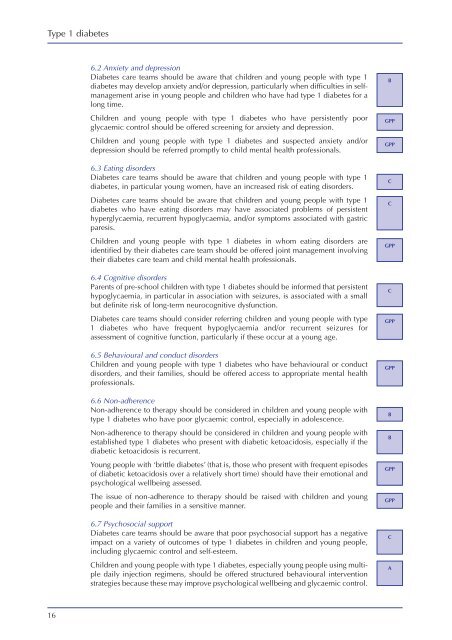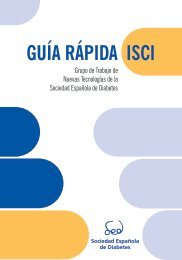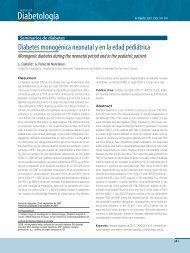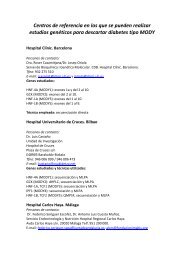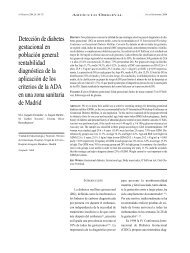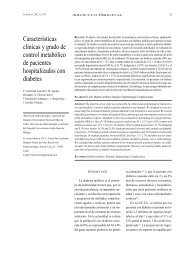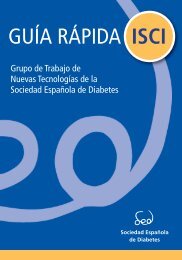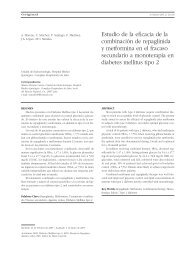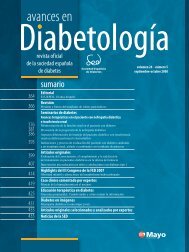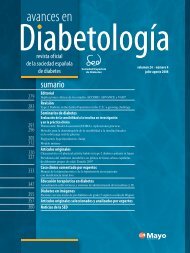You also want an ePaper? Increase the reach of your titles
YUMPU automatically turns print PDFs into web optimized ePapers that Google loves.
<strong>Type</strong> 1 <strong>diabetes</strong>6.2 Anxiety and depressionDiabetes care teams should be aware that children and young people with type 1<strong>diabetes</strong> may develop anxiety and/or depression, particularly when difficulties in selfmanagementarise in young people and children who have had type 1 <strong>diabetes</strong> for along time.Children and young people with type 1 <strong>diabetes</strong> who have persistently poorglycaemic control should be offered screening for anxiety and depression.Children and young people with type 1 <strong>diabetes</strong> and suspected anxiety and/ordepression should be referred promptly to child mental health professionals.6.3 Eating disordersDiabetes care teams should be aware that children and young people with type 1<strong>diabetes</strong>, in particular young women, have an increased risk of eating disorders.Diabetes care teams should be aware that children and young people with type 1<strong>diabetes</strong> who have eating disorders may have associated problems of persistenthyperglycaemia, recurrent hypoglycaemia, and/or symptoms associated with gastricparesis.Children and young people with type 1 <strong>diabetes</strong> in whom eating disorders areidentified by their <strong>diabetes</strong> care team should be offered joint management involvingtheir <strong>diabetes</strong> care team and child mental health professionals.6.4 Cognitive disordersParents of pre-school children with type 1 <strong>diabetes</strong> should be informed that persistenthypoglycaemia, in particular in association with seizures, is associated with a smallbut definite risk of long-term neurocognitive dysfunction.Diabetes care teams should consider referring children and young people with type1 <strong>diabetes</strong> who have frequent hypoglycaemia and/or recurrent seizures forassessment of cognitive function, particularly if these occur at a young age.6.5 Behavioural and conduct disordersChildren and young people with type 1 <strong>diabetes</strong> who have behavioural or conductdisorders, and their families, should be offered access to appropriate mental healthprofessionals.6.6 Non-adherenceNon-adherence to therapy should be considered in children and young people withtype 1 <strong>diabetes</strong> who have poor glycaemic control, especially in adolescence.Non-adherence to therapy should be considered in children and young people withestablished type 1 <strong>diabetes</strong> who present with diabetic ketoacidosis, especially if thediabetic ketoacidosis is recurrent.Young people with ‘brittle <strong>diabetes</strong>’ (that is, those who present with frequent episodesof diabetic ketoacidosis over a relatively short time) should have their emotional andpsychological wellbeing assessed.The issue of non-adherence to therapy should be raised with children and youngpeople and their families in a sensitive manner.6.7 Psychosocial supportDiabetes care teams should be aware that poor psychosocial support has a negativeimpact on a variety of outcomes of type 1 <strong>diabetes</strong> in children and young people,including glycaemic control and self-esteem.Children and young people with type 1 <strong>diabetes</strong>, especially young people using multipledaily injection regimens, should be offered structured behavioural interventionstrategies because these may improve psychological wellbeing and glycaemic control.BGPPGPPCCGPPCGPPGPPBBGPPGPPCA16


